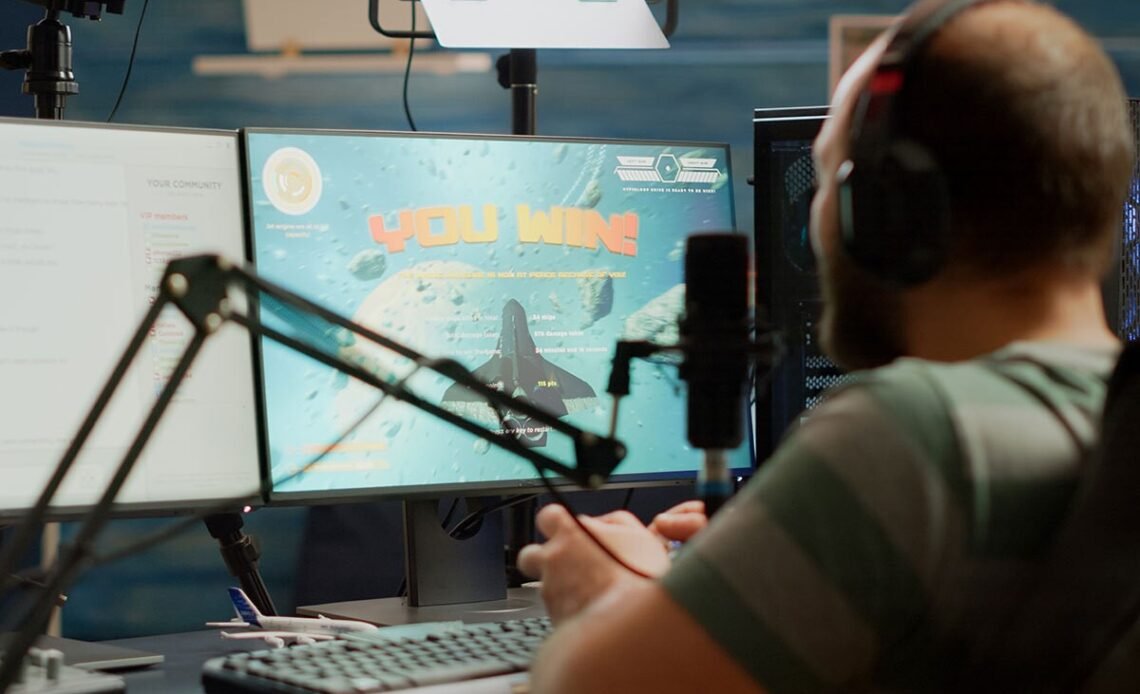
Sound design remains one of the most powerful yet often underappreciated elements in creating truly immersive gaming experiences. While visuals immediately capture attention, it’s the auditory landscape that often determines whether players feel genuinely present within virtual worlds. From environmental ambience to interactive feedback systems, thoughtful audio implementation transforms good games into unforgettable experiences that resonate long after players set down their controllers.
Creating Distinctive Sonic Identities
Every successful game establishes a recognizable sonic signature that players instantly associate with its world. The haunting violin theme from The Last of Us evokes emotional responses before any visuals appear. Developers carefully select instrument palettes and sound characteristics that align with their game’s thematic elements.
When my brother first booted up Red Dead Redemption 2, the distinctive, Western-inspired guitar immediately transported us both to the American frontier. Sound directors often create custom instrument libraries specifically for individual projects – Hellblade’s team recorded unusual percussion to establish its unique Norse-inspired soundscape.
Sonic branding extends beyond music to include characteristic interface sounds and environmental effects that distinguish games within crowded genres. These sonic identities contribute significantly to marketing effectiveness – many players recognize games from audio cues alone during trailers. Small indie studios increasingly prioritize distinctive audio design to stand out despite limited visual budgets. The most memorable game worlds pair their visual aesthetic with equally thoughtful sonic landscapes, creating multisensory experiences that define their creative universe.
Psychological Feedback Through Audio Cues
Sound provides crucial psychological feedback that shapes player experiences across all genres. The satisfying click when selecting menu options creates tangible interaction despite touching only glass or plastic. Online poker platforms demonstrate this principle particularly well – subtle chip sounds and dealing noises create an authentic gambling atmosphere despite the digital environment. My regular poker group switched platforms last month specifically because one site’s superior audio made virtual games feel remarkably similar to our pre-pandemic physical sessions.
Reward sounds trigger dopamine responses that reinforce player behavior – achievement notifications use specific tonal patterns that create satisfaction. Horror games manipulate psychological responses through audio – footsteps behind players generate fear responses more effectively than visual monsters. Sports games utilize crowd reactions to magnify the emotional impact of player actions – scoring feels significantly more rewarding when accompanied by appropriate audience sounds.
First-person shooters rely on directional audio cues that create spatial awareness beyond visual field limitations. Interface sounds subtly guide players regarding correct and incorrect actions without requiring explicit instructions. These psychological feedback mechanisms operate largely beneath conscious awareness yet fundamentally shape how players experience and remember games.
Environmental Storytelling Through Ambient Audio
Ambient soundscapes tell environmental stories that visuals alone cannot convey. The distant factory sounds in Fallout games communicate industrial history without explicit narrative explanation. Last week, while playing Skyrim, I realized how effectively birdsong variations communicate different biomes even when visual attention focuses elsewhere. Ambient audio creates crucial depth perception – sounds properly attenuating with distance provide spatial information that flat screens cannot deliver visually.
Weather systems gain tremendous impact through associated audio – rain experiences feel incomplete without appropriate sound design. Urban environments become believable through carefully layered city noises reflecting location characteristics – Night City in Cyberpunk sounds fundamentally different from Saint Denis in Red Dead Redemption 2.
Historical settings particularly benefit from researched ambient audio – Assassin’s Creed’s sound designers study period-appropriate street sounds for each era they represent. Dynamic systems that adjust ambient audio based on player actions significantly enhance immersion – enemies becoming alert changes background tension without explicit notification.
The difference between good and great open worlds often comes down to ambient audio implementation detail – games with rushed soundscapes feel noticeably less convincing despite visual fidelity. These environmental audio elements create a subconscious believability that maintains immersion during extended play sessions.
Character Development Through Voice Performance
Voice acting fundamentally shapes how players connect with game characters. Performance direction has evolved dramatically – comparing original Resident Evil recordings with modern narrative games reveals the industry’s maturation. Developers increasingly cast actors who physically resemble their characters, enabling performance capture that integrates vocal and physical expression.
Smaller studios have found creative solutions when working with limited voice budgets – Hades uses distinctive vocal filters to create character variety with smaller cast requirements. Breathing patterns communicate character state effectively – hearing protagonist exertion during climbing segments creates a physical connection with their experience.
Dialogue mixing techniques have improved substantially – conversations now adjust naturally based on environment and character positioning. Non-verbal vocalizations often communicate more effectively than dialogue – character grunts, sighs, and laughs create personality without explicit exposition.
Games increasingly adapt theatrical voice direction techniques rather than traditional animation approaches, resulting in more nuanced performances. The best voice implementation considers cultural and contextual authenticity – Ghost of Tsushima’s language options reflect thoughtful consideration of the historical setting.
When my roommate started Horizon Zero Dawn, Aloy’s voice performance immediately established a character connection that was sustained through dozens of gameplay hours.
Interactive Music Systems Responding to Player Actions
Adaptive music systems have revolutionized how soundtracks respond to gameplay. Combat music that seamlessly transitions from exploration themes creates fluid experiences without jarring breaks. Layer-based systems add or remove instrumental elements based on player situation – tension strings might increase during stealth detection without completely changing the musical piece.
Modern engines enable precise synchronization between player actions and musical elements – combos in rhythm games feel satisfying when perfectly aligned with beats. Open-world games increasingly employ geographic music mapping – distinct themes for different regions that crossfade naturally during travel. Vertical layering techniques maintain musical cohesion while adjusting emotional intensity based on proximity to objectives or threats.
Boss battles gain tremendous impact through dedicated musical pieces that amplify the encounter’s significance. Developers increasingly consider music as interactive rather than passive – rhythm games represent only the most obvious implementation of this philosophy. When my sister reached God of War’s mountain summit last weekend, the subtle musical shift perfectly complemented her accomplishment without explicitly commenting on it. Even sports games implement adaptive music systems – NBA 2K adjusts arena music during crucial game moments to enhance dramatic tension. These responsive systems create subconscious emotional scaffolding that guides player experience while maintaining their sense of agency.
Spatial Audio Creating Convincing Three-Dimensional Worlds
Spatial audio technologies transform flat visual presentations into convincing three-dimensional environments. Binaural recording techniques create startlingly realistic positional audio, even through ordinary headphones. Horror games particularly benefit from precise audio positioning – footsteps accurately tracking around players generate tension impossible through visual means alone.
Virtual surround implementations have improved dramatically – even budget headsets now provide meaningful directional information. Height channels in modern audio systems add vertical positioning that significantly enhances environmental believability. Object-based audio represents the technology’s future – individual sound sources exist independently in three-dimensional space rather than as pre-mixed channels.
First-person games become nearly unplayable without spatial audio – the competitive disadvantage without directional sound information makes multiplayer games particularly difficult. Ray-traced audio represents an emerging frontier – sound reflections calculated similarly to light reflections create more accurate environmental acoustics.
Room scaling technologies adjust reverb and echo characteristics based on environment size and material composition. My cousin recently invested in a spatial audio headset specifically for Warzone – the competitive advantage from precise audio positioning justified the purchase despite already owning standard headphones. These technologies collectively create audio environments that convince players’ brains they occupy three-dimensional spaces despite flat visual displays.
Conclusion
Sound design fundamentally shapes player perception and emotional connection to game worlds, yet it often receives a fraction of the recognition of visual elements. The most memorable gaming experiences leverage audio’s unique capacity to create spatial presence, emotional resonance, and subconscious immersion. As technology continues to advance, sound design opportunities will expand further through spatial audio refinements, interactive systems, and accessibility innovations. Developers who recognize audio’s transformative potential create experiences that resonate more deeply and maintain their impact long after visual memories fade.
For More: InstrumentalFX








